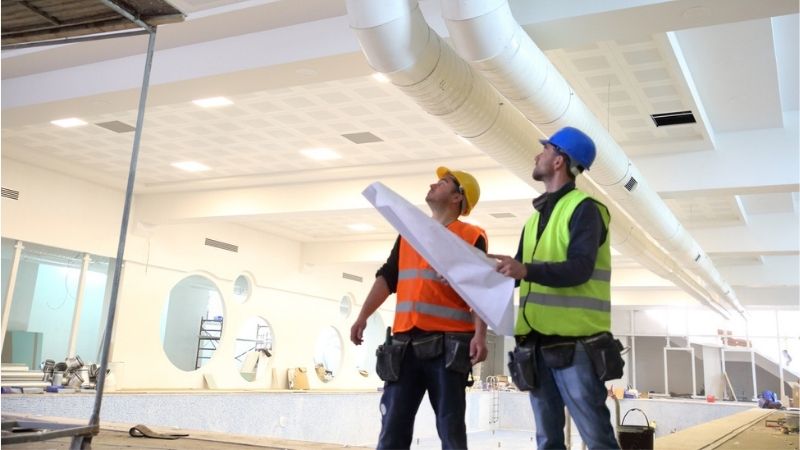Data’s Role in Facility Management Unpacked
We live in times unlike any others, with operations across a huger range of sectors affected.
In this article, Facilio, an enterprise platform solution for real-time facilities operations and maintenance, shares insights into why integrated data-led operations are key to addressing all facility management pain points.
The facility management sector is no stranger to disruptions but disruption took on an unprecedented scale following the global pandemic.
Long-standing operational gaps and dormant issues were laid bare all at once, giving little time for appropriate crisis response and management.
As a result, end-user expectations changed, gross margins experienced pressures, workforce size reduced and overall operational productivity was affected.
Along with these issues, the industry found itself grappling with new regulations and safety protocols, which are likely to remain in place across the globe, for some time to come.
If history is any guide, events that create such a global impact almost always lead to permanent positive changes. And we are now gradually assimilating some of this new reality.
Technology has emerged as a primary enabler of this transformation across business and industry, including in facility management.
As expected, the industry is currently rife with new tech-driven solutions. But this presents a selection dilemma—what solution best meets the new requirements.
Any decision around this choice must factor in many aspects; including, but not limited to, business bottom-lines, integration, end-user experiences, and scalability.
Irrespective of how advanced a technology is, it has to be effectively implemented and contextualised within pre-existing conditions and systems. In addition, the solution must unlock value for all stakeholders, from owners, to facility management staff, to end-users, to vendors.

Portfolio-wide visibility into operations and management is crucial to successful implementation and post-implementation management of any facility management technology.
One way to achieve such visibility is by bringing building systems under the umbrella of a flexible, IoT-enabled ecosystem, where data can be harnessed from all assets, and used to derive actionable insights.
In such a scenario, the integration of systems must be so seamless and meticulous that data related to every facility management function, staff, resource, and system is accounted for, in the value loop.
The obvious benefits are implementation of preventive maintenance; corrective work order management; off-the-rack templates and schedules; creation of a global asset, space, and inventory repository; API-led integrations with financials and transactions; third party contractor tracking and vendor management; plus much more.
Such Integrated facility management opens up possibilities that increase operational purview, from asset management to experience management, and beyond. When portfolio-wide operations are centralised under the command of a control centre, facility management teams have ready access to information that was elusive in traditional, legacy computer-aided facility management.
Staff are now more service-driven armed with real-time, rather than asset-driven and reactive, and are therefore custodians of end-user experience, safety and wellbeing in facilities.
In addition, portfolio-wide visibility enables facility managers to be more proactive and responsive to changes, through connected operations and process automation including fully mobile workflows; configurable audits and inspection workflows; custom process automation; as well as enhanced service request management, visitor management, and tenant engagement.
Not only do these capabilities optimise real estate operations, they unlock perhaps the most crucial functional flexibility needed in the new normal, which is ensuring operational continuity with minimum staff, and without undermining end-user experiences.
For example, with IoT and AI enabled 360-degree visibility, and the insights this provides, facility management operators can advise management on new value-centric services and upgrades, while supporting their claim with a detailed plan on how the CAPEX will translate to ROI.
Multifold value is unlocked for all stakeholders—upgrades will bring efficiency to facility management operations, owners can make well-informed decisions, and end-users gain new services.
Through it all, transparency is enhanced every step of the way, because the implementation of a new product or service, its post-implementation management, and the value it unlocks, are all accounted for.
The strength of integrated facility management is that, once set up successfully, its ability to optimise every aspect of buildings only grows over time, thanks to AI and ML technologies, which constantly pick up patterns, course correct, and adapt as per changing circumstances.
At any stage, the existing value can be quantified, new benchmarks can be set, and rules can be customised to stay agile.
But the benefits of the approach don’t end here. Functions across the building portfolio can accommodate future facility management technologies, systems, and devices, with ease; once the fundamental capability—which is the integration of all systems, and gaining granular visibility across them—is implemented.
With multi-stakeholder participation, meticulous planning, and effective implementation, what the industry stands to achieve through integrated facility management can be truly limitless.
Click here to talk to one of our consultants and find out why dozens of real estate owners and operators use Facilio to make their property operations efficient and future-ready.
The Urban Developer is proud to partner with Facilio to deliver this article to you. In doing so, we can continue to publish our daily news, information, insights and opinion to you, our valued readers.
















